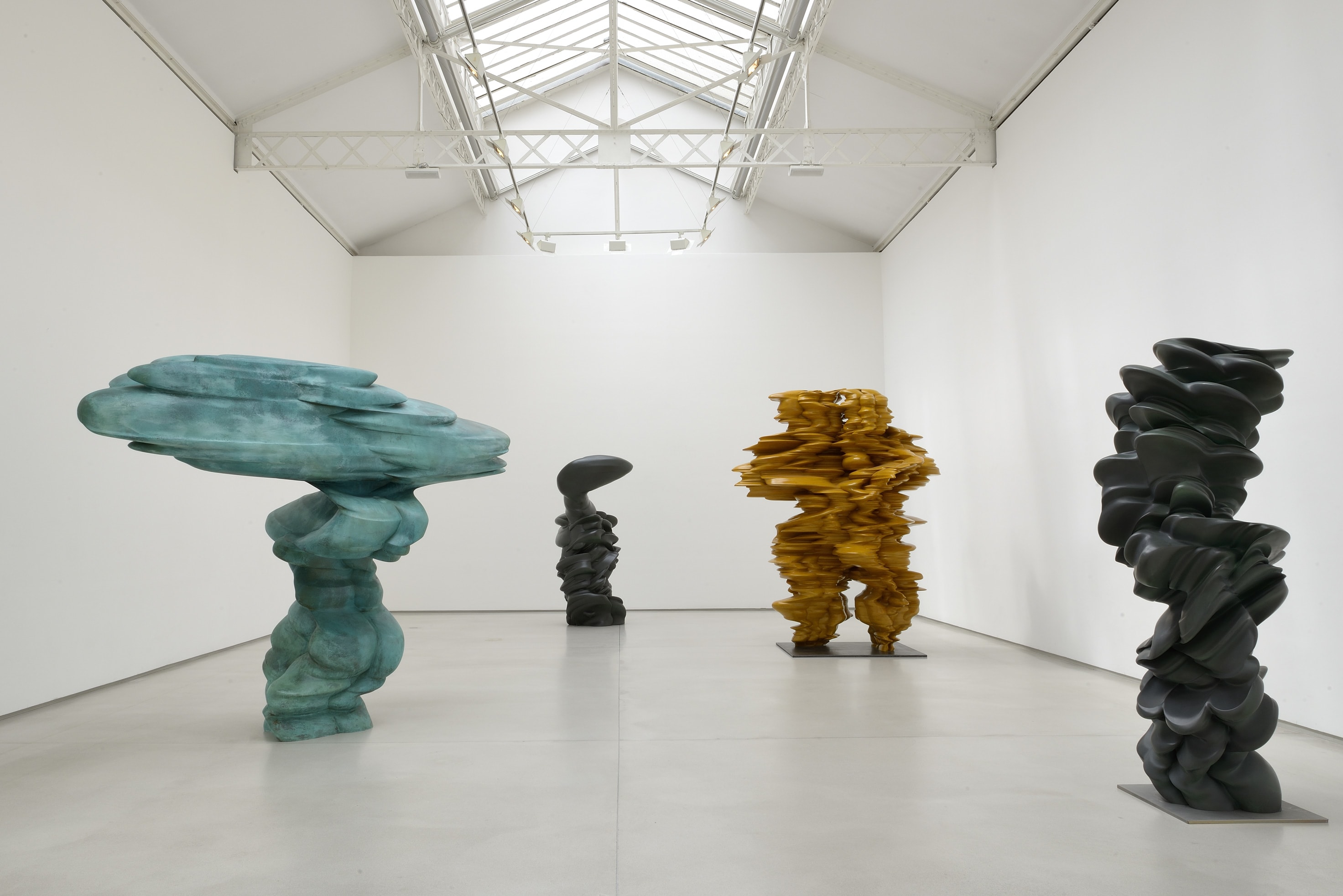

Overview
Cragg's sculptural œuvre was originally motivated by his encounter with English Land Art and Performance, and is still distinguished by an immense wealth of surprising formal inventions and combinations.
Galerie Thaddaeus Ropac Paris is holding a comprehensive solo exhibition of new sculptures by Tony Cragg (b 1949), one of the most distinguished contemporary sculptors. The exhibition will feature 15 new sculptures of steel, bronze, wood and stone. Subsequently, the Musée d’Art Moderne de Saint-Etienne Métropole will host an exhibition of Tony Cragg's works from September 2013.
Cragg's sculptural œuvre was originally motivated by his encounter with English Land Art and Performance, and is still distinguished by an immense wealth of surprising formal inventions and combinations. Cragg sees himself as a materialist, constantly seeking to explore and expand new materials. Stacking, layering and heaping have always been strategies in which he takes diverse waste material and everyday objects, and gives them an unexpected interpretation. Here, it is primarily steel, bronze and wood that he uses for his almost geologically layered arrangements.
In recent years, heads and faces have been appearing like leitmotivs in Cragg's work. A morphing circular movement shapes the rhythm of the sculptures. Overlapping, layering and convolution give rise to body landscapes forming positives and negatives, asserting a form and at the same time mapping out their vacant spaces. Cragg develops his forms from "artistic sediments that appear to arise from different eras" (Eva Maria Stadler, 2008). Recurring forms are stacked into surrealistic totem-like pillars. The horizontal extension of the biomorphic form is reminiscent of futurist Italian speed fanatics like Umberto Boccioni and Giacomo Balla, while the verticality of his pillar-like sculptures brings to mind Constantin Brancusi, who similarly arrived at a reduction of the natural form through his abstract formal language. Nature with all its structures, from micro to macro, has been the dominant theme of Tony Cragg’s works over the past ten years.
Tony Cragg's distinguishing feature is his primary concern to find new, unprecedented forms that amaze the viewer by their unusual biomorphic and technoid references. A very apt remark which was made in 1911 by the Cubist sculptor Raymond Duchamp-Villon might well have come from Tony Cragg: "The sole purpose of the arts is neither description nor imitation, but the creation of unknown beings from elements which are always present but not apparent".
Tony Cragg was born in Liverpool in 1949 and has lived in Wuppertal since 1977. He began his studies at the Gloucestershire College of Art and Design, before changing his course to the Royal College of Art in London in 1973. Since the 1980s his work has been represented at many important international exhibitions, including documenta 7 and 8 in Kassel (1982 and 1987), São Paulo Biennial (1983) and Venice Biennale in 1980, 1988 (he represented Great Britain), 1993 and 1997. In 1988 he was awarded the Turner Prize, and in 1992 he was made a Chevalier des Arts et des Lettres. From 1979 he taught at the Düsseldorf Academy of Art, where he became professor in 1988, and in 2001 he was appointed Professor of Sculpture at the Berlin Academy of Arts. Since 1994 he has been a member of the Royal Academy of Arts, London, and since 2002 a member of the Academy of Arts, Berlin; that same year he was elevated to the status of Commander of the British Empire (CBE). In 2007, Tony Cragg received what is probably the most prestigious art prize in the world, the Praemium Imperiale. In 2009 he succeeded Markus Lüpertz as Rector of the Düsseldorf Academy of Art.
Important institutions have been presenting Tony Cragg's works in solo exhibitions since the 1980s; they include the Kunsthalle, Bern (1983); Lousiana Museum Humlebæk (1984); Brooklyn Museum, New York (1988); Kunstsammlung Nordrhein-Westphalen, Düsseldorf (1989); Art Institute of Chicago (1990); Reina Sofia, Madrid (1995); Von der Heydt-Museum, Wuppertal (1999); Tate Gallery, Liverpool (2000); Kunst- und Ausstellungshalle der Bundesrepublik Deutschland, Bonn (2003); Neues Museum, Nuremberg (2005); Lehmbruck Museum, Duisburg (2007); Belvedere, Vienna (exhibition with F.X. Messerschmidt in 2008); Staatlichen Kunsthalle, Karlsruhe; Museum der Moderne, Salzburg (2009). In 2011, nine new works by the artist were shown in the Cour Marly, the Cour Puget and I. M. Pei's glass pyramid at the Louvre, under the title Figure Out – Figure In. That same year, the Scottish National Gallery, Edinburgh, the Nasher Sculpture Centre, Dallas, and the Küppersmühle Museum, Duisburg, held comprehensive retrospectives of his work. 2012 saw a large-scale exhibition tour through China: the Shanghai Himalayas Art Museum, Chengdu MOCA and Central Academy of Fine Art Museum in Peking.

















































































































































































